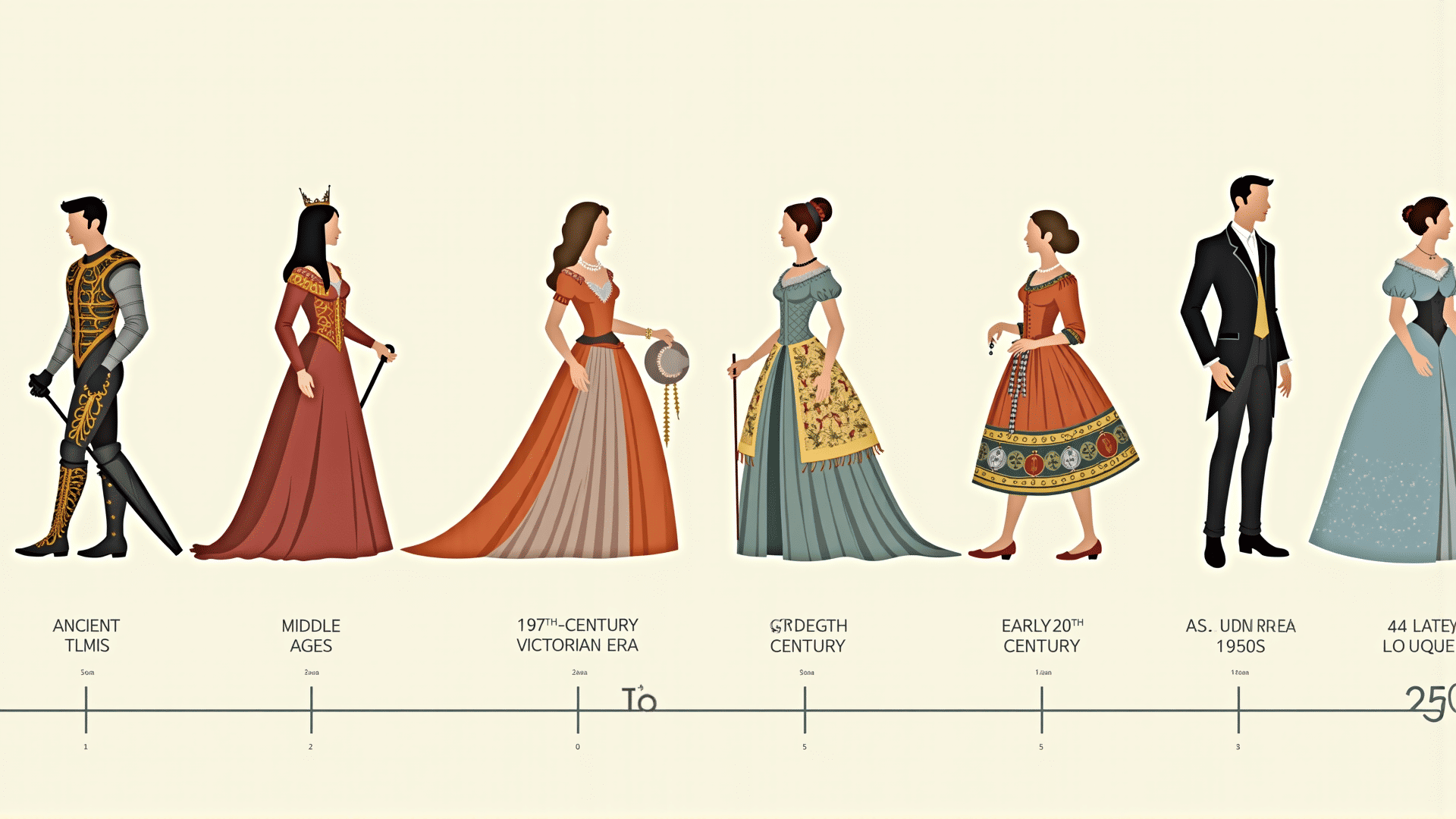Fashion has always been a mirror reflecting cultural, social, and historical changes. From ancient times to contemporary style, each era has left its unique imprint on how we dress. Let's embark on a fascinating journey through the history of fashion and discover the influences that have shaped our present-day style.
Ancient Civilizations: The Dawn of Fashion
In the earliest days of fashion, clothing served primarily as protection against the elements. However, as civilizations like Egypt, Greece, and Rome flourished, style began to take on a deeper significance. The Egyptians favored fine linens and elaborate jewelry, signifying their wealth and status. In contrast, ancient Greeks draped themselves in flowing togas that accentuated the human form, reflecting their appreciation for beauty and proportion.
The Middle Ages: Function Meets Form
During the Middle Ages, fashion choices were deeply influenced by one's role within the hierarchical structure of society. The nobility donned luxurious fabrics such as silk and velvet, often adorned with intricate embroidery. Peasants, on the other hand, wore simple garments made from wool or linen. The era also saw the emergence of garments like the tunic and cloak, which were both functional and decorative.
The Renaissance: A Burst of Creativity
The Renaissance marked a period of significant creativity and cultural rebirth. Fashion became an art form, with bold colors and extravagant designs reflecting the period's enthusiasm for innovation. The Italian and French courts led the charge, with fashions including voluminous skirts, ruffled collars, and lavishly adorned headwear symbolizing opulence and power.
The 18th Century: Rococo and Revolution
The whimsical and ornate Rococo style dominated the early 18th century, with pastel colors, intricate lacework, and dainty accessories defining the look of the elite. However, as the century progressed, political upheaval led to a transformation in style. The French Revolution ushered in simpler, more egalitarian fashions. Clothing became more modest, reflecting the revolutionary ideals of liberty and equality.
The 19th Century: The Birth of Haute Couture
The 19th century welcomed dramatic shifts in fashion, driven largely by the industrial revolution and technological advances. With the advent of sewing machines, clothing could be mass-produced, making fashion more accessible. At the same time, haute couture emerged in Paris, where designers like Charles Frederick Worth tailored made-to-measure garments for the wealthy. Women sported crinolines and bustles, while men dressed in tailored suits, demonstrating a newfound attention to individual style.
The 20th Century: A Century of Rapid Change
The 20th century was a period of rapid evolution in fashion. The early decades saw the glamorous flapper dresses of the roaring twenties, while World War II necessitated more practical attire, such as the utilitarian designs of the 1940s. The 1960s brought about a cultural revolution, with miniskirts and psychedelic patterns challenging traditional norms.
As the century progressed, fashion became increasingly diverse, reflecting the growing influence of subcultures and global exchanges. From punk and grunge to hip-hop and minimalism, the 20th century was characterized by a dynamic interplay of contrasts and innovations.
The Modern Era: Embracing Diversity and Sustainability
In the 21st century, fashion continues to evolve at a rapid pace. Technology and globalization have made trends more transient, while digital platforms enable immediate access to a plethora of styles worldwide. Today, there is also a growing consciousness around sustainability, prompting designers and consumers alike to prioritize eco-friendly practices.
Moreover, the modern era celebrates individuality and diversity more than ever. With the incorporation of various cultural influences and the breakdown of traditional gender norms, fashion is a platform for creativity and self-expression without boundaries.
As we look back on fashion's journey through time, it's clear that the clothes we wear are more than just fabric and thread—they are a tapestry of our shared history, reflecting the ever-changing story of humanity.
